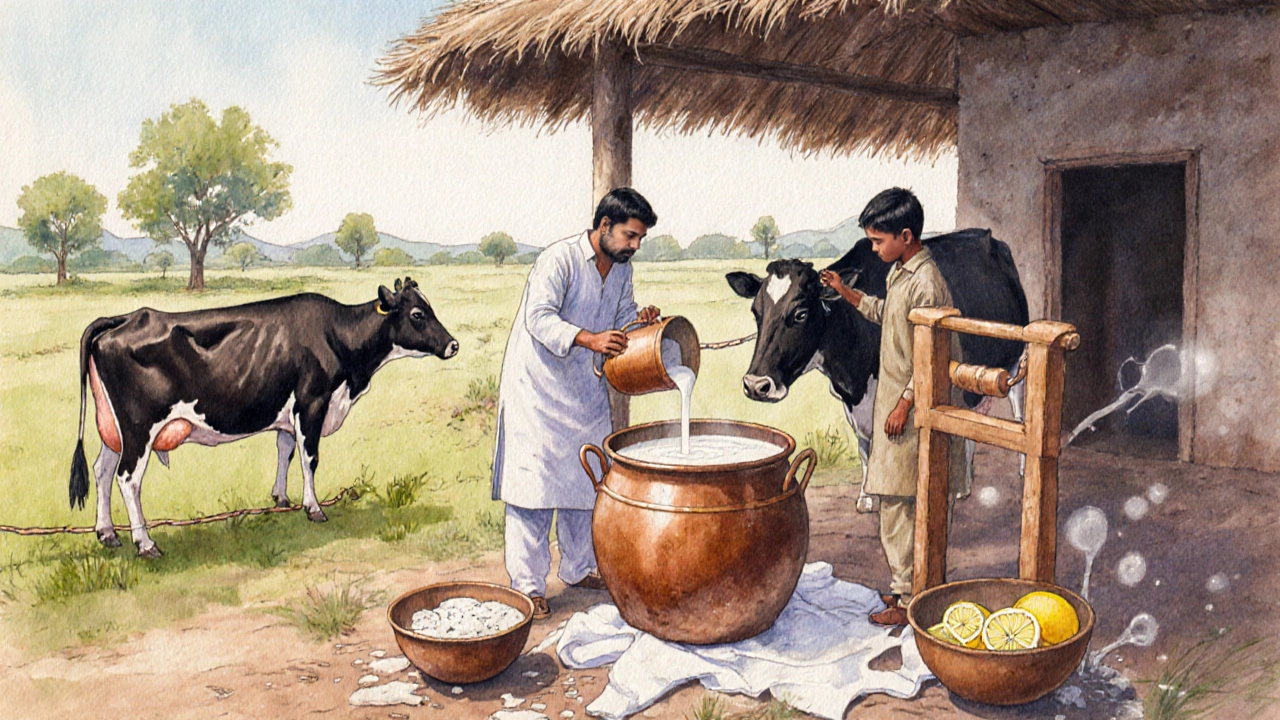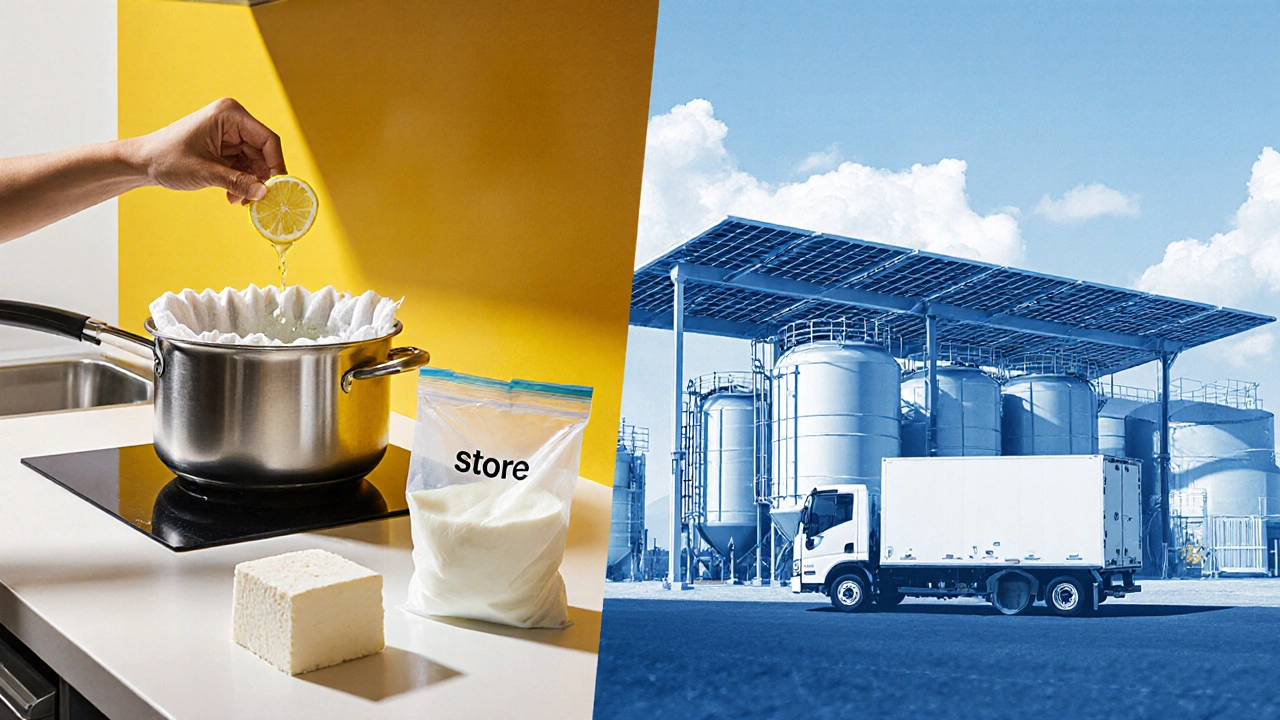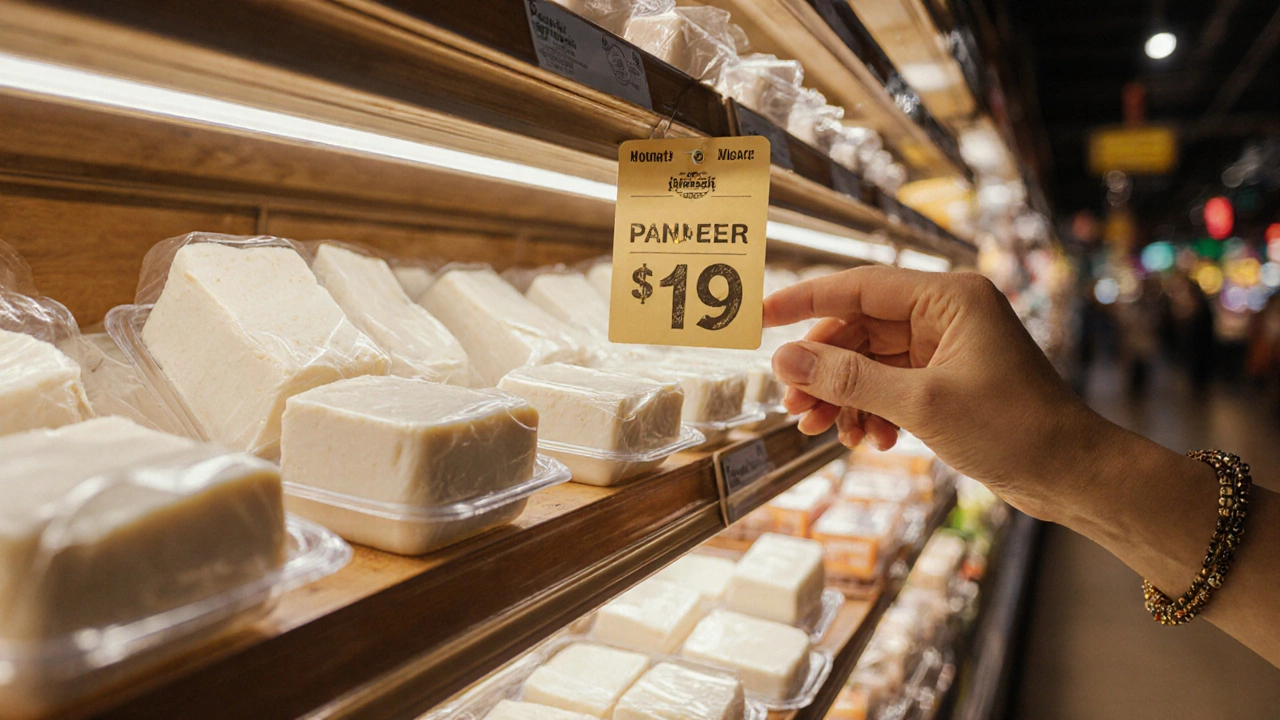Paneer Cost Calculator
Calculate Paneer Price
Enter current milk price per liter to see estimated paneer cost
Why Paneer Costs So Much
Paneer requires 10 liters of milk per kg, with milk accounting for 55% of retail price. Production costs include processing, cold chain logistics, and taxes.
Estimated Costs
| Estimated Paneer Price | ₹0.00 |
| Your Potential Savings | ₹0.00 |
Cost Breakdown
Make it at home
Homemade paneer uses the same ingredients but eliminates retail markup and packaging costs. For every ₹100 you spend on store-bought paneer, you could save up to ₹40 by making it yourself.
When you reach for a block of paneer cheese at the supermarket and see the price tag, it can feel like you’re buying gold. The question most of us ask is simple: why does paneer cost so much? The answer lies in a mix of farming economics, processing steps, supply‑chain logistics, and market dynamics that all add up. Below we break down each driver, compare it with other cheeses, and give you practical ways to keep the bill low without sacrificing taste.
What Paneer Actually Is
Paneer cheese is a fresh, non‑aged Indian cheese made by curdling whole milk with an acid such as lemon juice or vinegar. Unlike many Western cheeses, it doesn’t require rennet or long fermentation, which makes the production process quick but also heavily dependent on the cost of milk.
Milk - The Biggest Cost Ingredient
The price of paneer starts with the price of milk. In 2024‑25, global milk prices rose about 12% due to droughts in key dairy regions and higher feed costs. Since paneer uses roughly 10liters of milk to produce 1kilogram of cheese, any milk price increase hits the final price directly.
How Dairy Farming Affects Prices
Dairy farming in India is largely small‑scale, with farms averaging 2-3cattle per household. Low economies of scale mean higher per‑litre production costs compared with large industrial farms in the EU or US. Seasonal milk shortages during the summer heat push prices up further, and many farms lack modern cooling equipment, leading to higher waste and lower yields.
Processing Steps That Add Up
Even though paneer doesn’t need rennet, there are still several steps that increase cost:
- Acid curdling - using lemon juice or vinegar incurs a small but measurable expense.
- Pressing and draining - requires labor and equipment.
- Packaging - most paneer is sold in vacuum‑sealed plastic trays, adding material cost.
- Cold chain logistics - paneer must stay refrigerated from factory to store, which means extra electricity and transport fees.

Government Policies and Taxes
India’s dairy sector is heavily regulated. While the government provides subsidies for cattle feed, it also imposes a VAT of 5% on dairy products. In addition, certain states levy a small excise duty on processed cheese, which includes paneer. These taxes are passed directly to the consumer.
Import Tariffs and Competition
Because paneer is a domestic product, you might think tariffs wouldn’t matter. However, imported cheeses (like mozzarella or cheddar) compete on price for restaurants and food service. Import tariffs on those foreign cheeses can be as high as 20%, effectively making paneer appear more expensive in relative terms, even if its absolute price hasn’t changed.
Why Paneer Is Pricier Than Other Fresh Cheeses
Compared with cottage cheese or queso fresco, paneer often costs 30-40% more. The reasons are:
- Higher milk usage per kilogram.
- Less industrial automation in Indian plants.
- Heavier reliance on small‑scale farmers who face fluctuating input costs.
These factors combine to create a steeper price curve.
Cost‑Saving Alternatives
If you love the texture of paneer but want a friendlier price tag, consider these options:
- Tofu - made from soy milk, it has a similar crumbly texture and is typically 50% cheaper.
- Homemade paneer - buying bulk milk and curdling it yourself can cut retail markup by up to 40%.
- Regional fresh cheeses - in some states, khoya or paneer‑style curds are sold in local markets at lower rates.

Breakdown of Paneer Price Components
| Component | Average % of Retail Price | Explanation |
|---|---|---|
| Milk | 55% | 10L of whole milk needed per kg of paneer. |
| Labor & Processing | 15% | Curdling, pressing, cutting, packaging. |
| Cold‑Chain Logistics | 10% | Refrigerated transport and storage. |
| Packaging | 8% | Plastic trays, labeling, sealing. |
| Taxes & Subsidies | 5% | VAT, state excise, modest dairy subsidies. |
| Retail Markup | 7% | Profit margin for supermarkets and small shops. |
Practical Tips to Reduce Your Paneer Bill
- Buy in bulk: larger packs often have a lower per‑kilogram price.
- Shop at wholesale markets: places like Mumbai’s Crawford Market offer paneer directly from dairy suppliers.
- Make it at home: heat 2liters of milk, add 2tablespoons of lemon juice, strain, press, and you have about 200g of fresh paneer.
- Freeze excess: paneer freezes well for up to 2months, letting you buy during sales.
- Look for seasonal discounts: during monsoon, milk supply peaks and prices dip.
Future Outlook - Will Paneer Get Cheaper?
Several trends could push prices down in the next few years:
- Modernization of dairy farms - government schemes aim to equip 1million small farms with cooling tanks, cutting waste.
- Growth of plant‑based cheese startups - competition may force traditional producers to streamline.
- Improved cold‑chain infrastructure - rail‑linked refrigerated containers reduce transport loss.
Until those changes become widespread, the core cost drivers-milk price and labor-will keep paneer on the pricier side of fresh cheeses.
Frequently Asked Questions
Why does paneer cost more than cottage cheese?
Paneer uses about 10L of milk per kilogram, whereas cottage cheese typically needs 6-7L. The higher milk consumption, combined with less automation in Indian dairies, drives a higher price.
Can I make paneer cheaper at home?
Yes. Buying bulk whole milk and curdling it yourself eliminates the retail markup and packaging cost. One kilogram of homemade paneer can cost up to 40% less than store‑bought.
Does government subsidy help reduce paneer price?
Subsidies on cattle feed lower farm‑level production costs, but they are modest compared with the overall milk price. The benefit often doesn’t translate into a noticeable retail price drop.
Are there cheaper cheese alternatives that work the same in recipes?
Tofu is the closest plant‑based match in texture and absorbs spices well. For non‑vegetarians, mozzarella or soft cheddar can substitute, but the flavor profile changes.
Will paneer become cheaper with the rise of plant‑based cheese?
Indirectly, yes. Competition from lower‑cost plant‑based cheeses pressures traditional producers to improve efficiency, which can lower prices over time.
